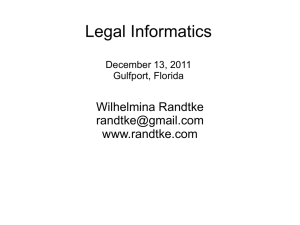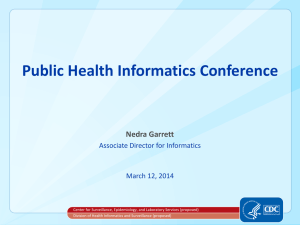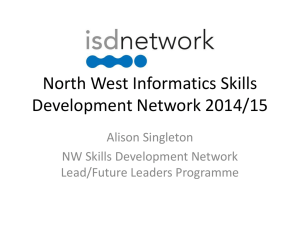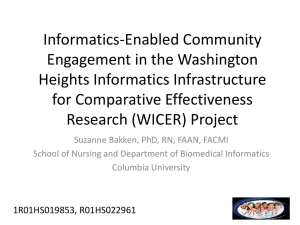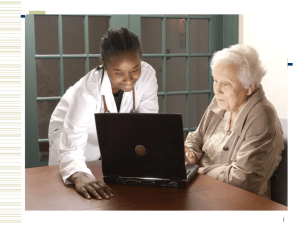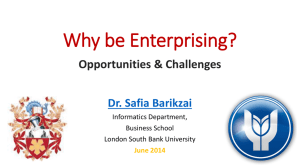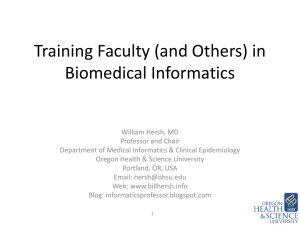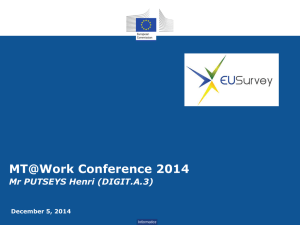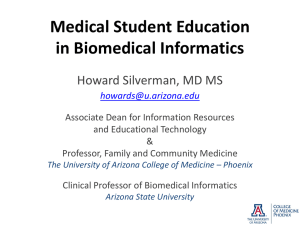Core Competencies: Foundations for Curricula and Job Descriptions
advertisement
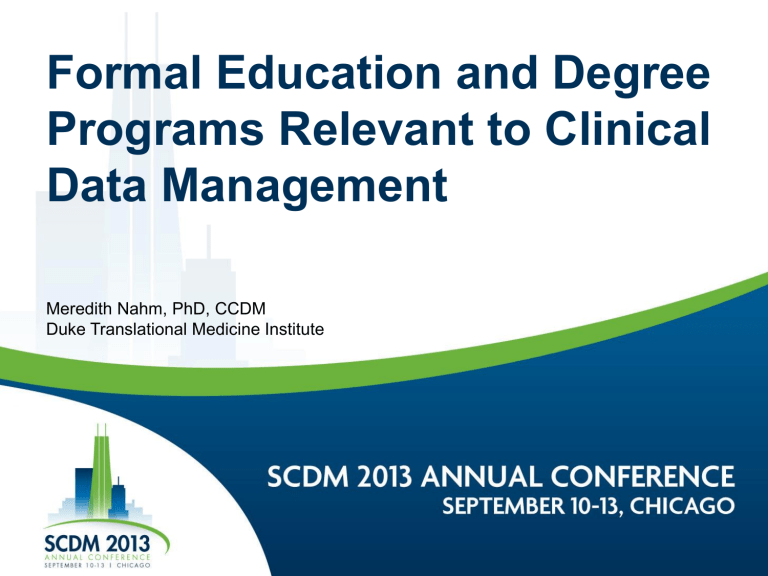
Formal Education and Degree Programs Relevant to Clinical Data Management Meredith Nahm, PhD, CCDM Duke Translational Medicine Institute After this session, you should be able to: • Identify theoretical foundations relevant to the learning of clinical data management skills. • Compare and contrast education, training and professional development programs. • Identify and describe model programs currently in operation in both industry and academe. • Identify competences in informatics programs and their graduates relevant to clinical data management. This Talk Will Cover • Differences between education, training, and professional development • Key adult learning principles • Activities underway to identify Clinical Research Informatics competencies for degree programs • Available degree/certificate programs SCDM Profession Milestones 1st SCDM fall conference, Philadelphia SCDM Code of Ethics 2003 Webinar 1997 1994 2009 2005 GCDMP vs 1.0 SCDM founded First SCDM OnFirst SCDM line course 2000 First SCDM Certification exam Certification exam vs 1 Beta test training, Colorado 2003 2004 Definition of the profession initiated 2012 Discipline Maturity Model Skilled trade Learn by trial & error OR skill training Work activity is an “art” No standardization Quality depends mainly on individual skill Low Profession Discipline Learn by apprenticeship, OJT, Best Practice Learn by formal degree programs, OJT 2o Activities coalesce, form practice supported by body of knowledge Profession supported by a scientific discipline Pseudostandardization through best practice Quality depends mainly on individual skill High Standardization Quality depends on capable processes Degree Program Need • CDM degree programs lacking – Increases training burden on employers – Decreases qualified job candidates • CDM is getting more complicated • Employers of CDMs 60 Clinical and Translational Science Award institutions Therapeutic development industry Federal Government: NIH, FDA, VA Research will not end anytime soon … Education versus Training Education • gain knowledge about facts, events, principles, concepts, theories, laws of nature. Training • gain a skill Assessment: • Demonstration of fact memorization • Association between concepts. • Application of knowledge to solve problems. • Application of knowledge in new domains to solve problems. Assessment: • Skill demonstration • Check for knowledge • Sometimes no verification that the learner had achieved the desired skills. In four slides … ADULT LEARNING PRINCIPLES • Adults want to know why they should learn. • Adults need to take responsibility. • Adults bring experience to learning. • Adults are ready to learn when the need arises. • Adults are task-oriented. lt Learning,” by Malcolm S. Knowles, The ASTD Training & Development dbook: A Guide to Human Resource Development, Robert L. Craig, editor, 1996 Knowles Adult Learning Assumptions Educators have determined that most adults, adolescents, and children learn best by experiencing a blend of activities that promote the three learning domains: cognitive, affective, and behavioral. Cognitive refers to knowledge or a body of subject matter, affective refers to attitudes and beliefs, and behavior refers to practical application. Three Learning Domains The table below shows examples of activities in each of the three domains. COGNITIVE AFFECTIVE BEHAVIORAL Lectures Values clarification exercises Role plays Brainstorms Nominal group process Simulations Discussions Consensus-seeking activities Teach backs Source: Principles of Adult Learning & Instructional Systems Design https://www.nhi.fhwa.dot.gov/downloads/freebies/172/PR%20Pre- ng We retain approximately 10 percent of what we see; 30 to 40 percent of what we see and hear; and 90 percent of what we see, hear, and do. We all have the capability to learn via all three styles, but are usually dominate in one. Three Learning Styles VISUAL AUDITORY KINESTHETIC Transparencies Lectures Role plays Videos/Slides Group discussions Simulations Flip charts Informal conversations Practice demonstrations Readings Stories and examples Writing/Note taking Demonstrations Brainstorms Activities 2 Source: Principles of Adult Learning & Instructional Systems Design https://www.nhi.fhwa.dot.gov/downloads/freebies/172/PR%20Pre- The table below shows some of the methods that appeal to visual, auditory, and kinesthetic learners. Training should take into account all three styles. Adult Learning Connection Content Application Available degree programs APPLICABLE TO CDM Informatics? The science of information. Health Informatics: use of information to improve human health Clinical Research Informatics: use of information - in research in humans - to facilitate translation of new discoveries into improvements in human health Biomedical Informatics Bioinformatics Imaging Clinical Computational biology Informatics Molecular Cellular Tissue Organ Human Public Health Informatics Human Population s Diagram taken from: Shortliffe, Edward H., Cimino, James J., Biomedical Informatics: Computer Applications in Health Care and Biomedicine (Health Informatics) third ed. Springer 2006 Public Health Informatics Clinical Informatics Bioinformatics Imaging Computational biology Biomedical Informatics Public Health Medical Record Surveillance, Outcomes CRF data Images Clinical Research Informatics: Broad area, drawing from the “-omics” data multiple areas of Biomedical Informatics CDM Study design Site Selection Start-up IRB approval Patient Recruit -ment Data Analysis collection & & reporting processing FDA review Clinical Data Management Post market Surveil -lance CRI & CDM Clinical Research Informatics Non-trials clinical research Study design Site Selection Start-up Study design Site Selection Start-up IRB approval Patient Recruit -ment Data Analysis collection & & reporting processing IRB approval Patient Recruit -ment Data Analysis collection & & reporting processing Translation review Into practice FDA review Clinical Trials Clinical Data Management Post market Surveil -lance Clinical Research Informatics Text CRI Specific Programs • Work underway to create CRI competencies • Will inform CRI specific curriculum and program development • Status: SCDM Cert. Competencies, along with others have been mapped to AMIA competencies • Developed programs should prepare great CDM candidates Available Programs • AMIA CRI 10x10 course (on-line) • Stanford: Clinical Research Informatics Graduate Certificate • Ohio State: Clinical and Translational Research Informatics Training Program (CTRIP), post-doctoral Master of Science Note: different intended audiences 1) Clinical Investigators, 2) Clinical users of informatics, 3) Health informaticists awareness of CRI, 4) Future informaticists (Cert & MS), 5) Informatics researchers Go Forth, Teach and Learn Educate & Train the Next generation Thank you !!
